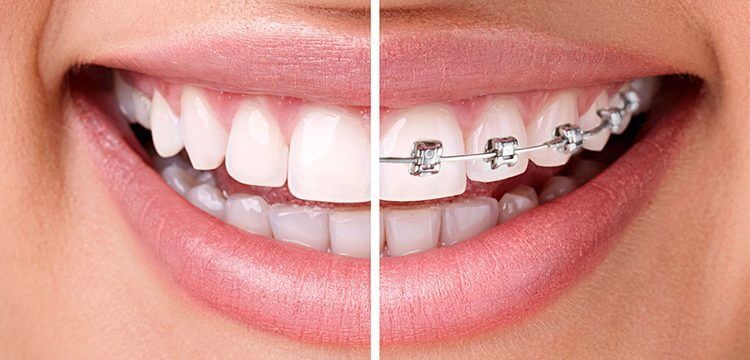How to Choose an Orthodontist: Why ABO Certification Matters
With so many options available, choosing the right orthodontist in the Phoenix area can be a daunting task that can make even the most cool, calm, and collected person feel overwhelmed.
Let’s say you’re considering clear braces or Invisalign. Most orthodontists provide these services, so the question becomes: Who can you trust to do the best job? Is there an easy way to differentiate one orthodontist from another?
One significant factor to consider is whether the orthodontist is board certified by the American Board of Orthodontics (ABO). This certification can make a big difference in the quality of care you receive.
In this article, we will explore the key factors that should go into your decision making process when choosing an orthodontist, and why ABO certification matters.

What is Orthodontics?
Orthodontics is a specialized field of dentistry that primarily focuses on correcting jaw and teeth alignment problems. Using devices such as braces and aligners, an orthodontist is able to improve not only the appearance of teeth, but also the function, so one can live a healthier life with a more confident smile.
What Training do Orthodontists Have?
Orthodontists went to dental school, just like your general dentist, but then completed an additional 2 to 3 years of training to learn how to handle complex orthodontic issues. Orthodontists are experts in diagnosing and treating dental and facial irregularities. From crooked teeth, to gaps, to bite issues, an orthodontist has the expertise to help.
ABO Certified: Going the Extra Mile
While doing research on the best orthodontist in Phoenix you’ll probably come across the term “ABO Certified.” But what does it mean and why does it matter when making your choice?
The American Board of Orthodontics (ABO) certification is a voluntary credentialing process where an orthodontist undergoes rigorous testing and peer evaluation. The process assesses their skills, knowledge and commitment to providing their patients with the highest quality orthodontic care.
What the Process Looks Like?
Written Exam
This is a rigorous exam with questions ranging from biomedical science to general clinical science to orthodontic clinical science.
Clinical Exam
This is a scenario-based examination that evaluates an orthodontist’s ability to apply critical thinking to real world scenarios, drawing from prior knowledge and abilities.
Certification Renewal
An orthodontist must undergo the process every 10 years in order to stay current in their knowledge and ensure they are continuing to adhere to modern standards of orthodontic excellence.
Why it Matters?
1. High Standards of Care
Any orthodontist can say they provide the highest standard of care but the ABO certification brings credibility to the statement.
2. Commitment to Continuous Education
ABO certified orthodontists are committed to learning about new technologies and trends in the industry. They recognize that learning doesn’t end after residency. This commitment to education allows the specialty to continue to grow and modernize.
3. Peer Recognition
An ABO certification is a mark of distinction. It shows that an orthodontist is recognized by their peers for their knowledge, expertise, and dedication to the field.
Other Than ABO Certification What Else Should You Consider?
Location
Orthodontic care can be an extensive process with many follow-up visits, so choosing a location that is conveniently located near your home or workplace, can make it easier to attend appointments, and reduce a potentially stressful factor in the process.
Treatment Option Availability
Different orthodontists offer different treatment options. For example, some might specialize in traditional braces, while others might offer clear braces or Invisalign. Figuring out which treatment option best aligns with your needs can help determine which orthodontic practice is right for you.
Experience
When it comes to orthodontic treatment, experience matters. Make sure that when looking for an orthodontist you are choosing someone with a proven track record and positive patient reviews. Between testimonials on their website and reviews on third party sites, you should be able to get a good idea of the quality you can expect from their care.
Initial Consultation
A good orthodontist will offer a consultation before starting treatment. This initial consultation can be a great way to judge if the practice is a good fit. Make sure you ask plenty of questions and be transparent about your concerns. Is the orthodontist patient with you? Do they communicate things clearly?
The Orthodontic Treatment Process
Understanding the overall flow of the treatment process can be helpful in preparing for what’s ahead:
Initial Consultation
This first step involves a thorough examination of your teeth and jaw. The orthodontist will discuss what the treatment goals are and recommend best options for moving forward.
Treatment Planning
Once you have agreed on a treatment plan, the orthodontist will take impressions, X-rays, and photographs of your teeth, which will then be used in designing your custom treatment.
Implementation
The orthodontist will begin treatment by implementing whatever is required and walking you through your role in caring for your oral health during the process.
Regular Check-Ups
Since orthodontic treatment plans often span over an extended period of time, you will have regular follow-up visits to monitor your progress. During these appointments, the orthodontist will make any necessary adjustments to ensure the desired result.
Retention
After the active treatment phase, if you receive a retainer, it’s crucial to wear it consistently in order to maintain your new smile and prevent your teeth from shifting back to their original positions.
Invisalign or Clear Braces?
When choosing an orthodontist, you might wonder if clear braces or Invisalign make sense for you. Ultimately, the decision will come down to what’s best for you and your unique situation.
Clear Braces
These are similar to traditional metal braces but less noticeable. They are a more aesthetic option, using tooth-colored brackets and wires to blend in. These can be effective for treating a wide range of orthodontic issues.
Invisalign
This treatment option uses a series of clear, removable aligners to straighten teeth. They are virtually invisible (hence the name) and can be removed for eating and cleaning. This is a popular choice for people looking for a more flexible, discreet treatment.
Conclusion
Choosing the right orthodontist is a major step in achieving the smile you want. By considering factors like ABO certification, location, treatment options, and communication, you’ll be on the right path to making an informed decision. Remember, your smile is an investment, so take the time to figure out which orthodontist in Phoenix will be the best fit for your needs!
With the right orthodontist, you can improve not only your smile, but also boost your confidence and oral health. So whether you’re considering clear braces, Invisalign, or other orthodontic treatments in Phoenix, make sure you’re in capable hands!



